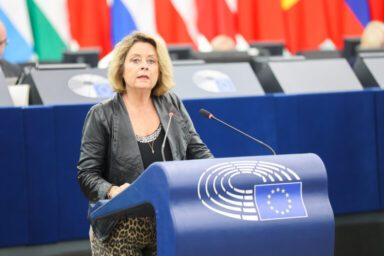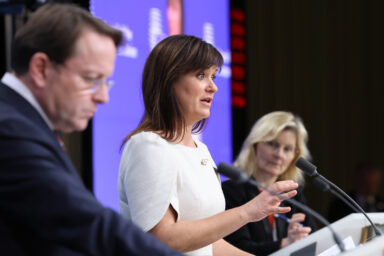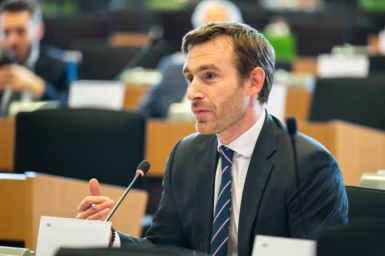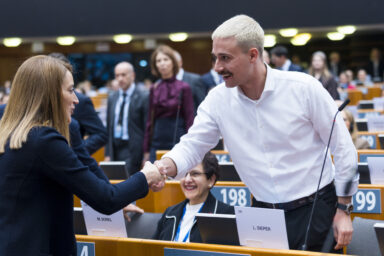Only five per cent of rare diseases in Europe have an approved treatment. EU lawmakers face—and exert—growing pressure to fix deep gaps in access, incentives, and innovation with a European action plan.
The EU is revising its General Pharmaceutical Legislation (GPL), seen as a once-in-a-generation chance to fix systemic gaps. But a key question now drives the debate. Can the GPL deliver for rare disease patients, or is a separate European action plan the only way forward?
The promise and the limits of the GPL
The Intergroup on Cancer and Rare Diseases held a hearing on Thursday. MEP Tomislav Sokol (EPP/HRV) highlighted the scale of the challenge.
“When we speak about rare diseases, in many cases, I would say in most cases, [patients] cannot get adequate treatment or cannot resolve the issues within one member state alone. This is why a coordinated European approach is necessary,” Mr Sokol urged.
He said the GPL aims to balance access, innovation, and competitiveness. But only tailored solutions, he added, will reach the most vulnerable patients, especially children and those with ultra-rare conditions: “We know that 95 per cent of patients who have rare diseases do not have a treatment yet. This is why we need targeted, modulating incentives to stimulate production of these kinds of medicines.”
You might be interested
A coordinated European approach is necessary. – MEP Tomislav Sokol (EPP/HRV)
Virginie Hivert, Head of Therapies and Access at EURORDIS, called for a graduated system of incentives that rewards real innovation where it’s most needed: “Only five per cent of rare diseases have an approved treatment… In some cases, there is no research ongoing at all. That’s why we need the right incentives in place. More effort, more reward, this is what we want to promote.”
Ms Hivert added that patients and clinicians must have a say in how “unmet medical need” is defined. She also warned against rigid criteria that ignore real-world realities.
Gaps in the legislative package
The paediatric oncology community has spoken as well. Professor Gilles Vassal of the European Society for Paediatric Oncology pointed to a glaring omission in the current GPL proposal: “At the moment, in the regulatory package, there is no new incentive to boost innovation for children with severe and life-threatening rare or ultra-rare diseases.”
He called for a “first-in-child” incentive to reward the development of medicines for children, not just adaptations of adult drugs, citing the case of medulloblastoma, a paediatric brain tumour that has seen no new therapies in over 25 years.
Meanwhile, industry representatives like EFPIA’s Tina Talbot warned that the proposed reforms risk undermining innovation by cutting orphan market exclusivity and regulatory protections: “We need to do more, not less, to address the unmet medical needs in rare diseases… But we still talk about prioritisation among diseases. And that, from our perspective, is not the right way to go.”
The GPL alone may not be enough
But as recent discussions showed, many stakeholders are already looking beyond the GPL. Across the political spectrum, the tone is shifting. MEP Tilly Metz (Greens-EFA/LUX) stressed that regulatory protection must reward meaningful innovation, not marginal advances: “We have to make sure that the treatments you reward with regulatory protection meet real unmet medical needs, or in other words, that they are meaningful innovations bringing real added value.”
Ms Metz also acknowledged that legislation alone won’t solve all the structural issues, a sentiment echoed at the Nordic Rare Disease Roadmap launch. The event took place in the European Parliament in Brussels on 1 July, hosted by MEP Stine Bosse (Renew Europe/DNK).
Ms Bosse used the occasion to deliver a powerful message on the value of coordinated EU action, quoting Budget Commissioner Piotr Serafin: “What we can do better and cheaper together, we must,” the MEP said. “And for me, that’s the recipe, for rare diseases, and many other areas.”
A European action plan on rare diseases
The Danish MEP called for a European action plan on rare diseases, not to create new bureaucracy, but to finally align the EU’s many underused tools and programmes under a shared vision. In an earlier interview with EU Perspectives, Ms Bosse put it plainly: “We are still waiting. I’m not asking for the action plan tomorrow morning; I’m asking for a date. Give us 2026, fine, but set it in stone. Right now, we’re drifting.”
I’m asking for a date. – MEP Stine Bosse (Renew Europe/DNK)
Virginie Bros-Facer, CEO of EURORDIS, echoed this view. The plan, she argued, should not replicate the Cancer Beating Plan or the new cardiovascular strategy, but instead coordinate and connect what already exists. “It doesn’t have to be massive”, she said. “We already have so many of those diseases addressed in EU tools, but putting them together, with political will, would help us avoid duplication, fill the gaps, and pool resources. Cheaper and better. That’s it.”
Indeed, most of the building blocks already exist: European Reference Networks (ERNs), research programmes, real-world data initiatives, and the European Health Data Space. But they often remain underused or disconnected.
A European Commission official echoed this view, noting that rare disease patients are already “the best examples we have in this area,” and urging the sector to “use what is there.” We have a lot. Let’s build on that,” said Hélène Le Borgne, policy officer at DG RTD.
“We have the ERN system … we have to make it better,” said Ms Bosse. “And of course, the Health Data Space, we have to invest more in it.”
The toll of inaction
The cost of delay is well documented. According to Lydia Abbad-Franch, Chief Medical Officer at SOBI, diagnosis for rare diseases can take six to eight years, and fewer than half of approved orphan drugs actually reach patients across the EU.
Even in countries with robust health systems, basic tools are missing. Katri Asikainen, President of HARSO, The Finnish Alliance of Rare Diseases and Disabilities Organisation, noted: “We have 400,000 rare-disease patients. And we don’t have an accurate registry … We need to implement the ORPHA codes with force into the patient’s information systems.”
Others pointed to systemic failures in valuing real-world evidence. Despite growing recognition from regulators, many national access decisions still come down to costs. “Going everything down to the lowest possible price … in the end, it’s going against the patient’s access,” said Ms Abbad-Franch.
Common priorities, shared voices
No formal declaration was issued. However, recurring themes raised by speakers from EURORDIS, ERDERA, EuropaBio, national alliances, and EU policymakers highlighted five shared priorities now shaping the EU policy conversation.
These include securing a dedicated EU budget line for rare diseases in the next Multiannual Financial Framework; ensuring patient-centred implementation of the upcoming Biotech Act and Life Sciences Strategy; establishing a flexible EU Rare Disease Action Plan to, rather than duplicate, existing efforts; scaling up real-world data and national registries through full ORPHA code integration; and reforming health technology assessment (HTA) processes to focus on patient value rather than cost alone.
With Denmark holding the rotating EU Council Presidency and rare diseases high on the SANT Committee’s agenda, the coming months may finally bring clarity, or at least a timeline. For Ms Bosse and others, that’s the minimum expected. “What we can do better and cheaper together, we must. That’s the recipe. For rare diseases, and beyond,” she stressed.
Both events underscored the growing consensus that only coordinated EU-level action can address the scale and complexity of rare diseases, with many now viewing a European action plan as the necessary complement to the GPL.











